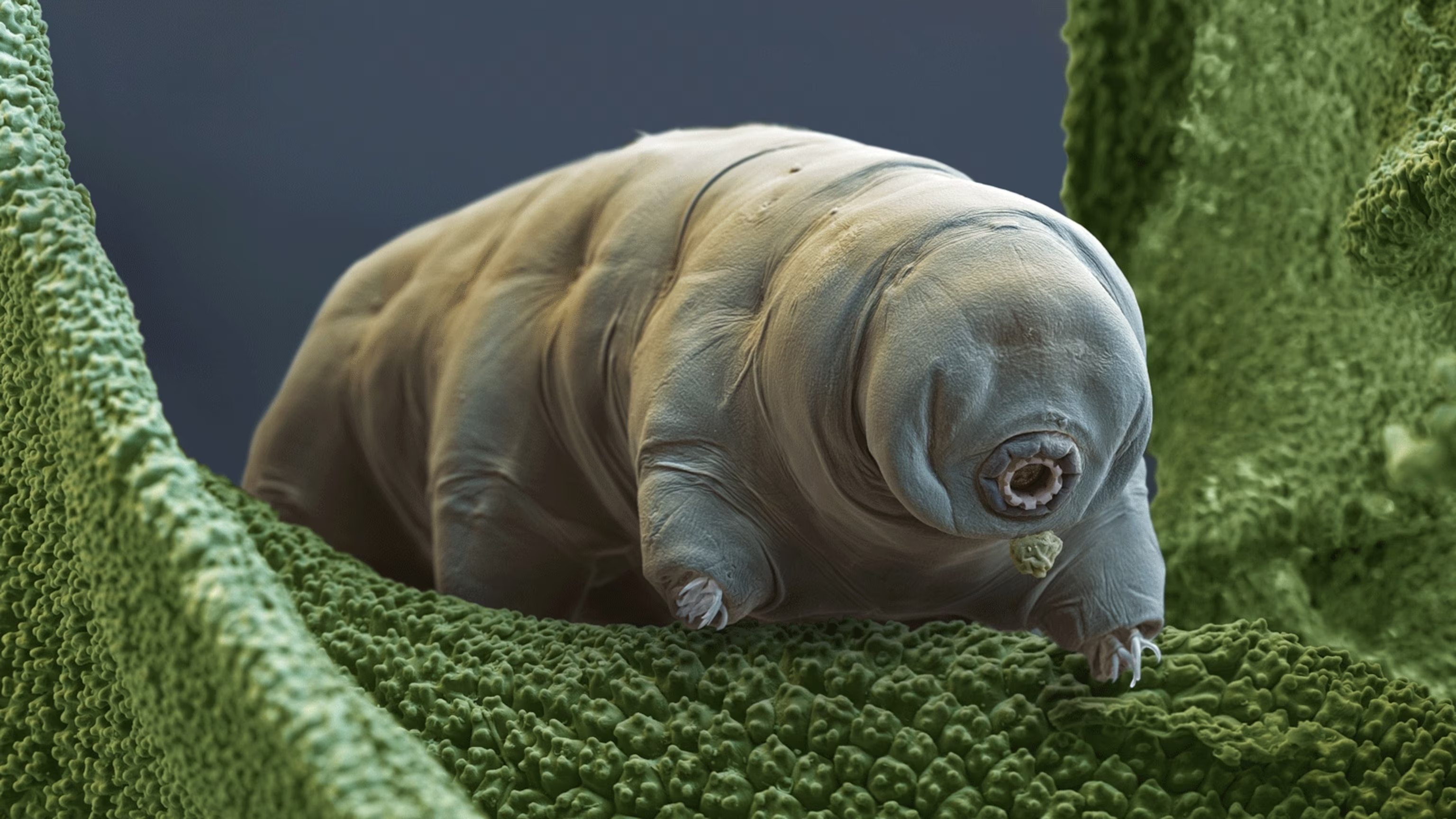Have you ever heard of the amazing creatures known as Tardigrades? These microscopic organisms, also called water bears, are some of the planet’s toughest and most resilient creatures.
Despite their small size, did you know these tiny creatures can survive almost anything – even the most extreme conditions that would be deadly to most other organisms?
Amazing, right?
In this post, I’ll share everything you need to know about tardigrades and explore some of their incredible abilities, like how they survive in the most extreme conditions on Earth (and beyond!).
What are tardigrades?
Tardigrades, also known as water bears, are extremely resilient microscopic eight-legged animals. Although they are called “water bears,” they are unrelated to mammals.
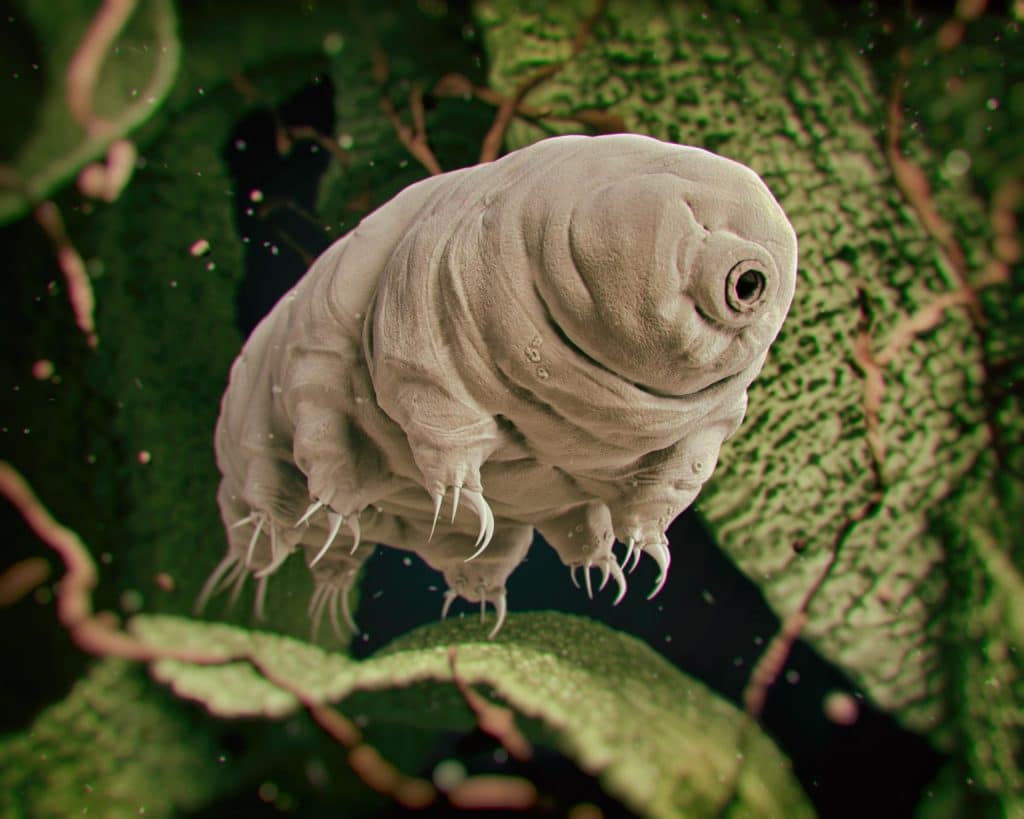
Instead, they belong to their own phylum called Tardigrada. A phylum is one of the major categories for classifying living things. Organisms in the same group have similar body shapes and structures.
Water bears are found in various environments, from the deep sea to mountaintops, and are known to withstand harsh conditions, earning them the nickname “moss piglet.”
In 1773, the German zoologist Johann August Ephraim Goeze discovered tardigrades and called them “little water bears.” Three years later, the Italian biologist Lazzaro Spallanzani named the group “Tardigrada,” or “slow stepper,” due to their toddling gait or the unsteady and wobbly way they creatures work.
The Integrated Taxonomic Information System (ITIS) currently recognizes about 1,300 known tardigrade species within the Tardigrada phylum, a classification category created by a partnership of U.S. federal agencies.
Did you know that tardigrades have been around for about 600 million years, predating the dinosaurs by around 400 million years?
Pretty cool, right?
What do tardigrades look like?
Water bears are very small, only about 0.002 to 0.05 inches (0.05 to 1.2 millimeters) long. They hardly ever grow bigger than 0.04 inches (1 mm) long. Even a big water bear is just 1mm long, so they can be hard to find.
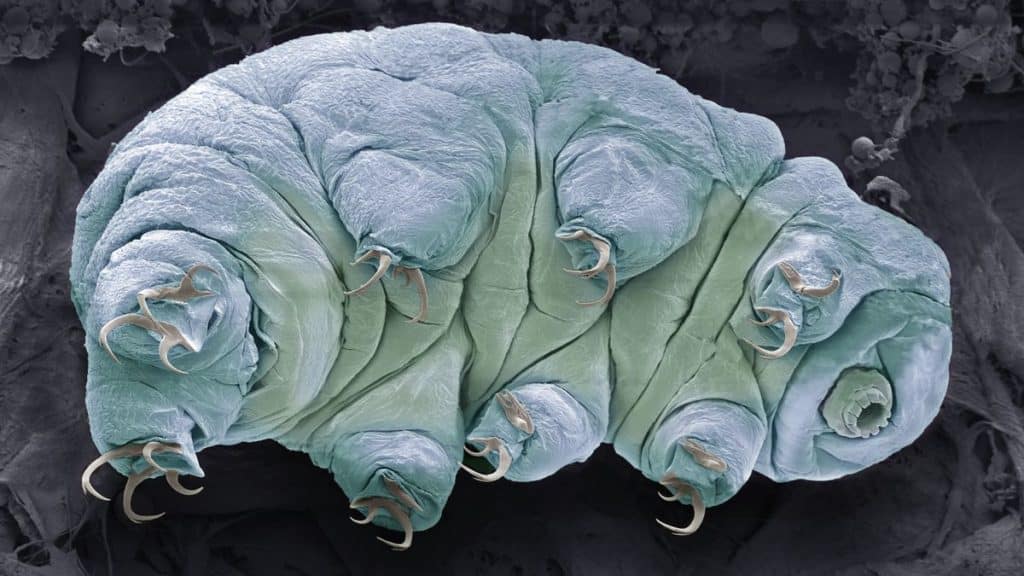
A tardigrade’s body typically has only 1,000 cells, which are far fewer than the many trillions of cells in the human body.
Although tardigrades may look soft, they have a strong outer layer, similar to the outer coverings of grasshoppers, praying mantises, and other related insects.
They also have four pairs of fleshy legs with retractable claws, four to six claws on each foot, to help them grip onto plants. The claws vary in number from 4 to 8, depending on the species. These legs are used for swimming or moving across wet surfaces.
They also have a special mouthpart to extract nutrients from plants and small organisms.
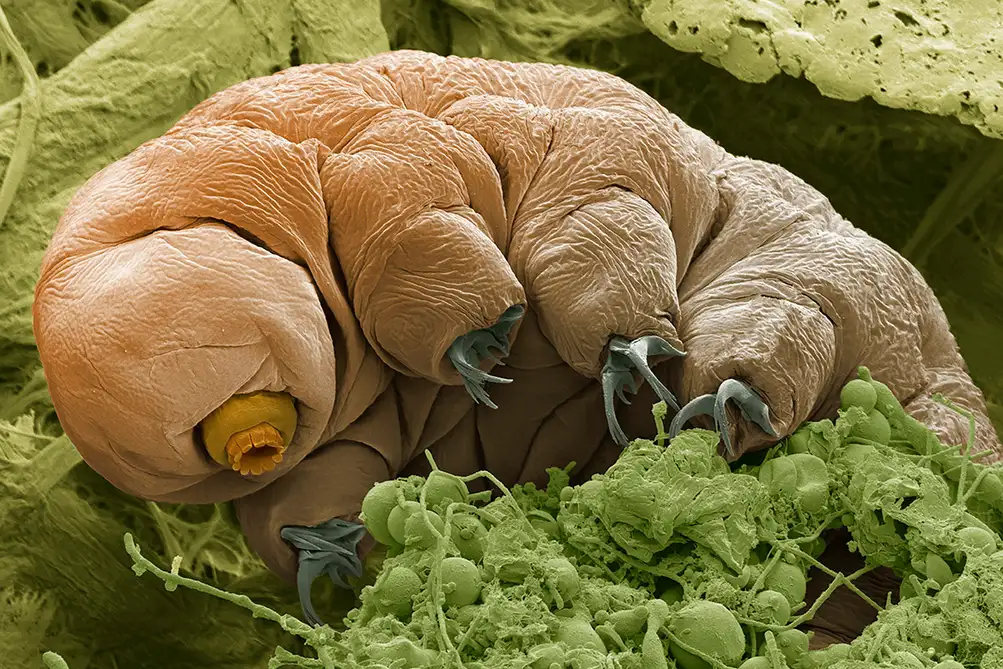
Some tardigrades have a basic eye spot on each side of their “face,” and in the center, they have a feeding tube through which they consume bacteria and algae.
Tardigrades also lack bones in their tiny bodies. Even though they don’t have a spinal cord, they have a nervous system that sends signals between their brain and body.
They also have a complete digestive system but lack a circulatory or respiratory system. Instead, they absorb oxygen from the water through their cuticle walls, and their muscles help transport nutrients in their fluid-filled skeleton.
Where to find them?
These water-loving animals are found in various wet environments all around the world, including soils, oceans, and lakes.
If you’ve never seen one, they are quite small and may require some effort to find.
Because they are typically less than 1 mm in length, they are hard to see without a microscope. If you want to see larger tardigrade specimens, a microscope with around 15-30 times magnification is good, but 100 times magnification is even better.
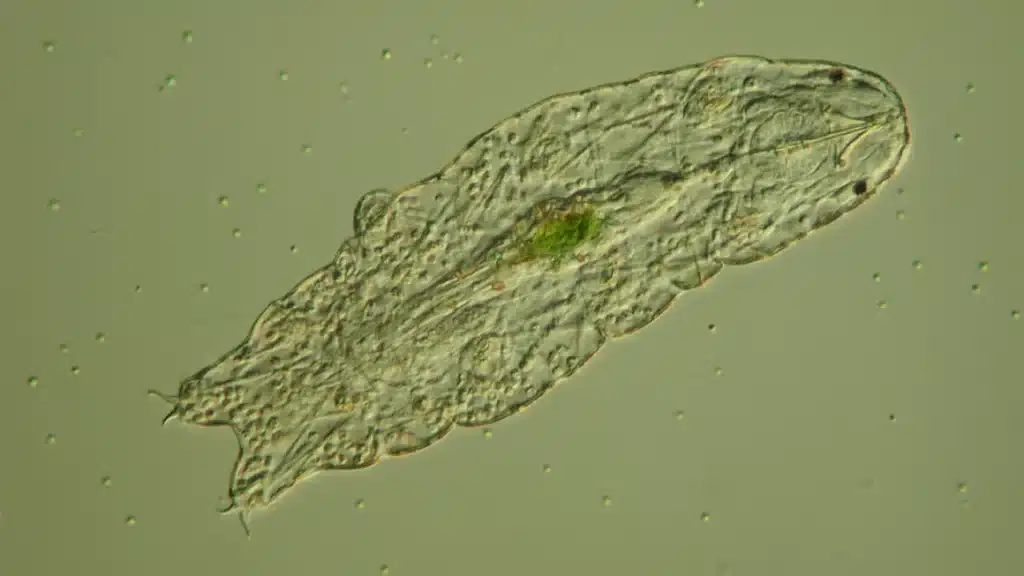
To find a tardigrade, soak some wet autumn leaves, moss, or lichen in water. Squeeze the material to collect the liquid, and place a few drops at a time in a small, clear pot.
Use a bright light to search through the liquid, and when you spot a small creature with eight limbs, you’ve found a tardigrade!
Tardigrades appear quite tough when you look at them closely, even though they’re smaller than a poppy seed. They have bear-like claws and sharp teeth that rip into and consume the liquid from moss and algae.
How tough are they?
Tardigrades can survive in extreme conditions such as freezing cold, boiling heat, and even the vacuum of space. They are also known as extremophiles or a small group of animals that can survive environments that most others cannot.
They can even go decades without food or water and endure extreme pressures and radiation exposure.
Now, how can these tiny creatures survive?
They can survive these conditions by slowing down their metabolism and entering a dormant state or extreme type of hibernation called cryptobiosis, which allows them to survive without water or in freezing conditions.
Without water, a tardigrade curls into a dry ball called a tun. Their bodily functions slow down so much that they are almost, but not quite, dead. They can stay like this for many years.
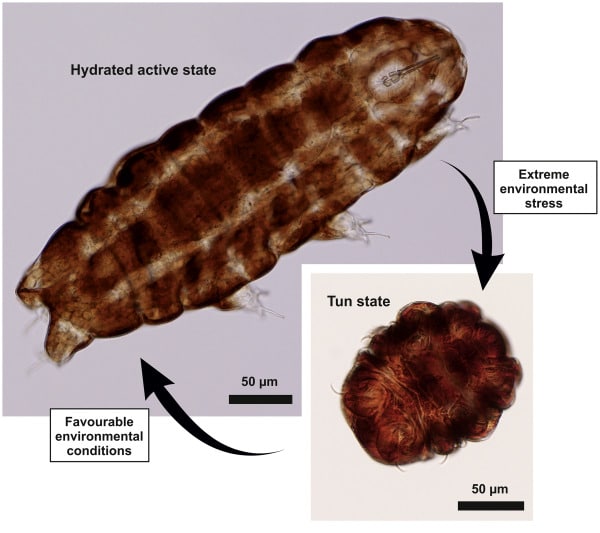
Scientists discovered that tardigrades in a tun state can survive in temperatures as low as minus 328 degrees Fahrenheit (minus 200 degrees Celsius) and in temperatures higher than 300 degrees F (148.9 C).
Once they are rehydrated, tardigrades can quickly come back to life. However, they are sensitive to high temperatures and may not survive in water temperatures of about 100 degrees Fahrenheit.
Although tardigrades can survive extreme conditions, some creatures still hunt them, like nematodes (a type of worm), amoebas, and even other tardigrades.
Experiments on Them
In 2007, scientists placed the tardigrades in a satellite and launched them into space. They stayed in special containers 167 miles above sea level for 10 days before falling back to Earth.
After the inspection, most of the water bears were fine. They endured radiation blasts 700 times stronger than the sun’s rays on Earth.
Another recent study involved shooting dried-up tardigrades from a high-speed gun, traveling nearly 3,000 feet per second (900 meters per second).
The tardigrades survived a heavy impact of about 1.14 gigapascals of pressure (over 165k psi). Gigapascals of pressure measure how much force is applied to a certain area. It helps scientists and engineers understand how materials respond to being squished or squeezed.
By understanding how tardigrades can withstand such harsh environments, scientists hope to understand how other living things, like humans, can survive in extreme environments, too.
